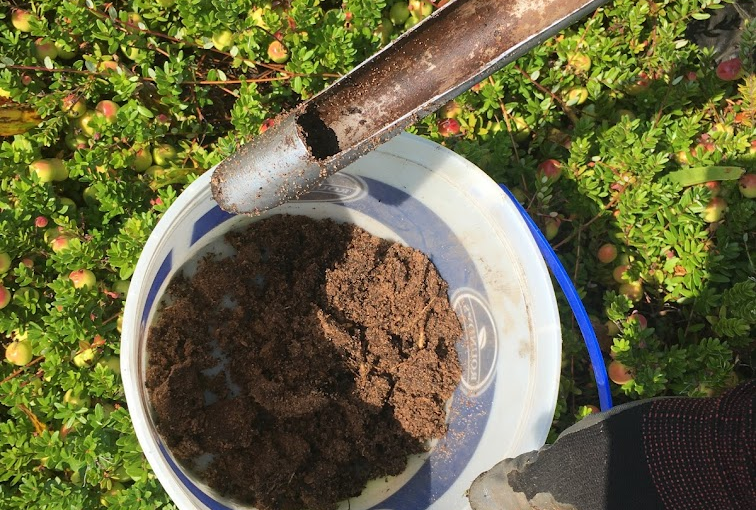Sep 1, 2021Two weeks left to sample tissues and soils for Wisconsin cranberries
It’s that time again – when our dynamic, responsive cranberry plants are finally doing the same thing for an entire month.
Throughout the Wisconsin growing season, cranberries are moving nutrients and carbohydrates throughout the plant –nutrients from roots to stems of leaves; carbohydrates from the production sites down to the roots – to fulfill the plant’s growth, bud set, fruit set, and recovery needs. The period between mid-August and mid-September, when plants are focusing all their energy on filling fruit, is the only month-long period in the growing season that we can expect nutrient concentrations in the plant to be the same from one week to the next.
So (for those on an annual testing regimen,) now is the time to take our tissue samples. This allows us to compare our results year-on-year to see long term trends in sufficiency or insufficiency of particular nutrients in our plant tissue. You know the drill (see source 2): walk a diagonal path across a bed, stopping to collect uprights from 10-12 sites. At each site, choose 5 fruiting and 5 non-fruiting uprights, and clip off only the current year’s growth. Do not include fruit, but do include the stem growth that is new this year. After you have passed through the bed, you should have roughly 1 cup of tissue. Label the bag. Label the soil samples you collected as well (3) and send them off to the lab!

When the lab returns your results, enter them into your spreadsheet or record-keeping system so that you can see long term trends, along with this year’s comparison with the lab-established optimal levels.
If you’d like help creating a long-term comparison spreadsheet, reach out to Allison Jonjak, Extension Cranberry Outreach Specialist. Combining your tissue test levels with your first-hand observations, your recent and prior year fertilizer applications, soil test results, and the optimal levels, you can evaluate and improve upon your fertilizer application practices. This can save on input costs by reducing waste, and it can improve your yield and yield stability over time.
We only get the opportunity to make year-on-year comparisons during this important time for our cranberry plants, so let’s make the most of it.
– Allison Jonjak, University of Wisconsin
Sources:
1: Cranberry Tissue Testing for Producing Beds in North America
2: How To Take a Cranberry Tissue Sample
3: How to Take a Cranberry Soil Sample















